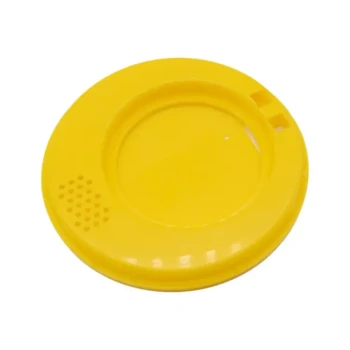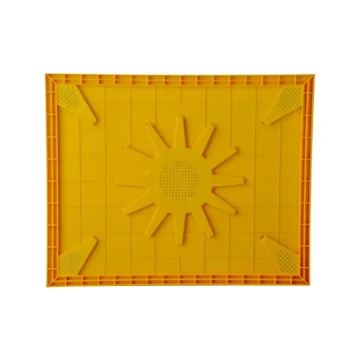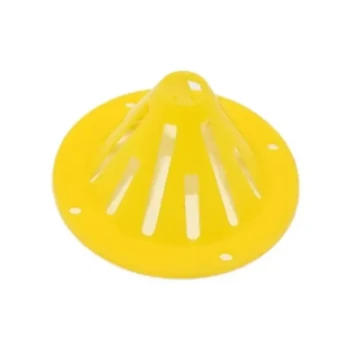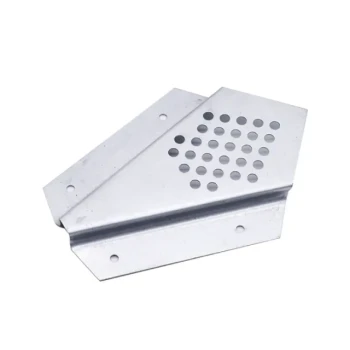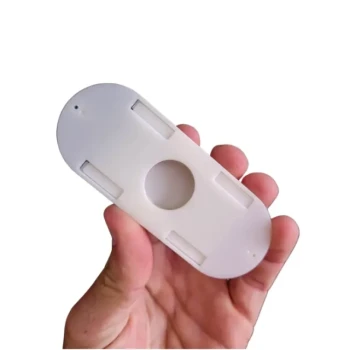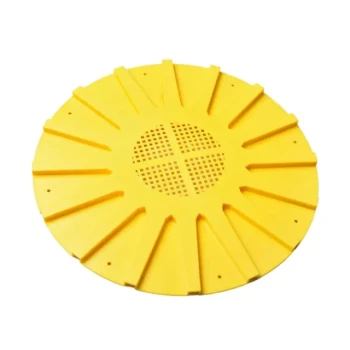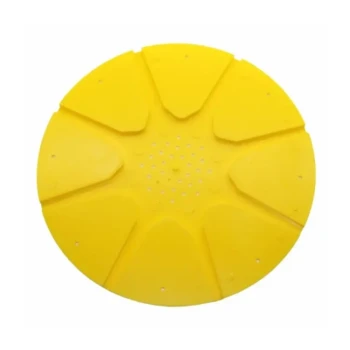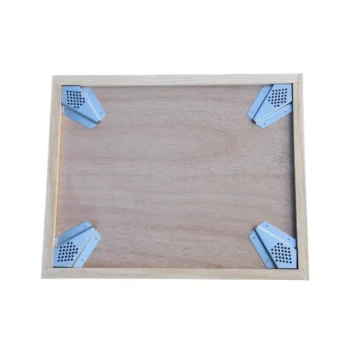At its core, a triangle bee escape board is a one-way gate designed to clear bees from honey supers before a harvest. It leverages a simple maze-like structure that is easy for bees to navigate on their way out but extremely difficult for them to use for re-entry. This allows a beekeeper to remove boxes of honey that are nearly free of bees, minimizing stress for both the colony and the keeper.
The board's effectiveness comes from exploiting two key bee behaviors: their natural tendency to move down into the brood nest at night and their difficulty navigating complex upward passages. It creates a gentle, passive method for clearing honey supers.
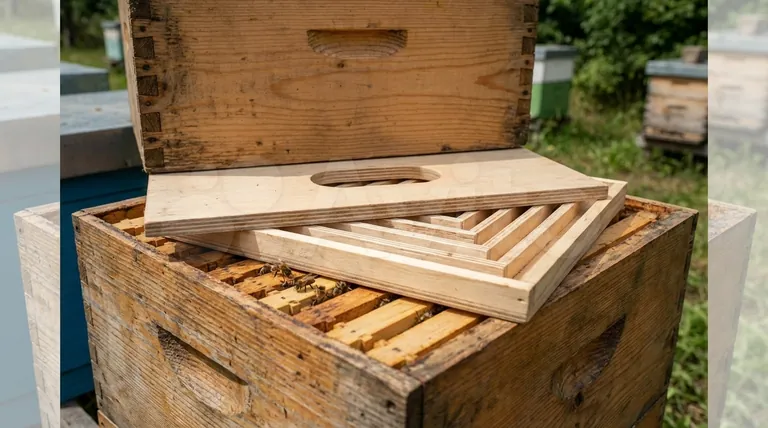
The Principle of the One-Way Gate
A bee escape board works by making downward travel simple and upward travel nearly impossible. It’s a tool that works with the bees' natural instincts rather than against them.
Exploiting Bee Navigation
The board is placed between the honey super you wish to harvest and the brood boxes below. The top side of the board, facing the honey, has a large, open entrance to the triangular "maze." Bees looking to move down can easily find and enter this opening.
However, the exit on the bottom side consists of one or two tiny openings at the points of the triangle. When bees from the brood nest try to return to the honey super, they encounter the flat bottom of the board and cannot find the small exit points to get back up.
Leveraging Natural Behavior
The design is most effective because bees naturally migrate downwards from the cooler honey supers at night. They move to join the main cluster in the warmer brood nest below. The escape board simply ensures this is a one-way trip.
Over a period of about 12 to 24 hours, the vast majority of the bees will have voluntarily moved out of the super, leaving it ready for a calm and straightforward harvest.
A Guide to Proper Implementation
Correctly using the board is critical for success. Simple mistakes in placement or timing can render it completely ineffective.
Step 1: Proper Installation
The board must be installed below the honey super(s) you plan to harvest and above the main brood boxes.
The orientation is crucial: the flat surface of the board must face up into the honey super, and the triangle structures must face down toward the brood nest.
Step 2: Ideal Timing and Duration
Install the board approximately 24 hours before you plan to harvest the honey. This gives the bees enough time, typically overnight, to migrate downwards.
Do not leave the board on the hive for more than a day or two. Given enough time, resourceful bees may discover alternative cracks or entrances to get back into the super, defeating the purpose.
Step 3: Optimal Conditions
The board works best during cooler weather or overnight when bees are naturally more inclined to leave the extremities of the hive and cluster for warmth.
Understanding the Limitations and Pitfalls
While highly effective, the triangle bee escape is not a foolproof solution. Understanding its limitations is key to avoiding frustration.
The Brood-in-Super Problem
The most common reason for failure is the presence of brood (eggs, larvae, or pupae) in the honey super. Nurse bees will not abandon brood. If you have brood in the frames you want to harvest, those bees will stay put, and the board will not work.
It's Not 100% Effective
You should not expect a completely bee-free super. There will almost always be a few stragglers left behind. Always wear your protective gear when removing the supers, just as you would during any other hive inspection.
Hive Integrity is Essential
The system relies on the bees being forced to use the board's central hole. If your hive boxes are in poor condition with extra gaps, cracks, or holes, bees will simply bypass the escape board and use these alternate routes to re-enter the super.
Making the Right Choice for Your Goal
Use this tool to make your honey harvest calmer and more efficient by planning ahead.
- If your primary focus is an efficient, low-stress harvest: Install the board correctly 24 hours before you harvest, after confirming there is no brood in the supers you intend to pull.
- If your primary focus is bee welfare: The escape board is an excellent choice, as it is a passive method that avoids chemical repellents (fume boards) or aggressive brushing, allowing bees to move on their own terms.
- If you are troubleshooting a failed attempt: First, check for any brood in the honey super. Second, confirm the board was installed with the triangle facing down. Finally, ensure you did not leave it on for more than 24-48 hours.
By understanding how this simple device leverages the colony's own instincts, you can make it a reliable part of your beekeeping practice.
Summary Table:
| Key Aspect | Details |
|---|---|
| Core Function | One-way gate to clear bees from honey supers before harvest. |
| Principle | Exploits bees' natural tendency to move down and difficulty navigating complex upward paths. |
| Key Advantage | Passive, chemical-free method that minimizes stress on the colony. |
| Ideal Timing | Install 12-24 hours before harvest, preferably during cooler weather or overnight. |
| Common Pitfall | Presence of brood in the honey super will cause nurse bees to stay, rendering it ineffective. |
Ready for a Calmer, More Efficient Honey Harvest?
Upgrade your beekeeping operation with professional-grade equipment from HONESTBEE. We supply durable, reliable beekeeping supplies and equipment to commercial apiaries and beekeeping equipment distributors through our wholesale-focused operations.
Let us help you streamline your harvest and improve bee welfare. Contact our team today to discuss your needs and request a wholesale quote!
Visual Guide
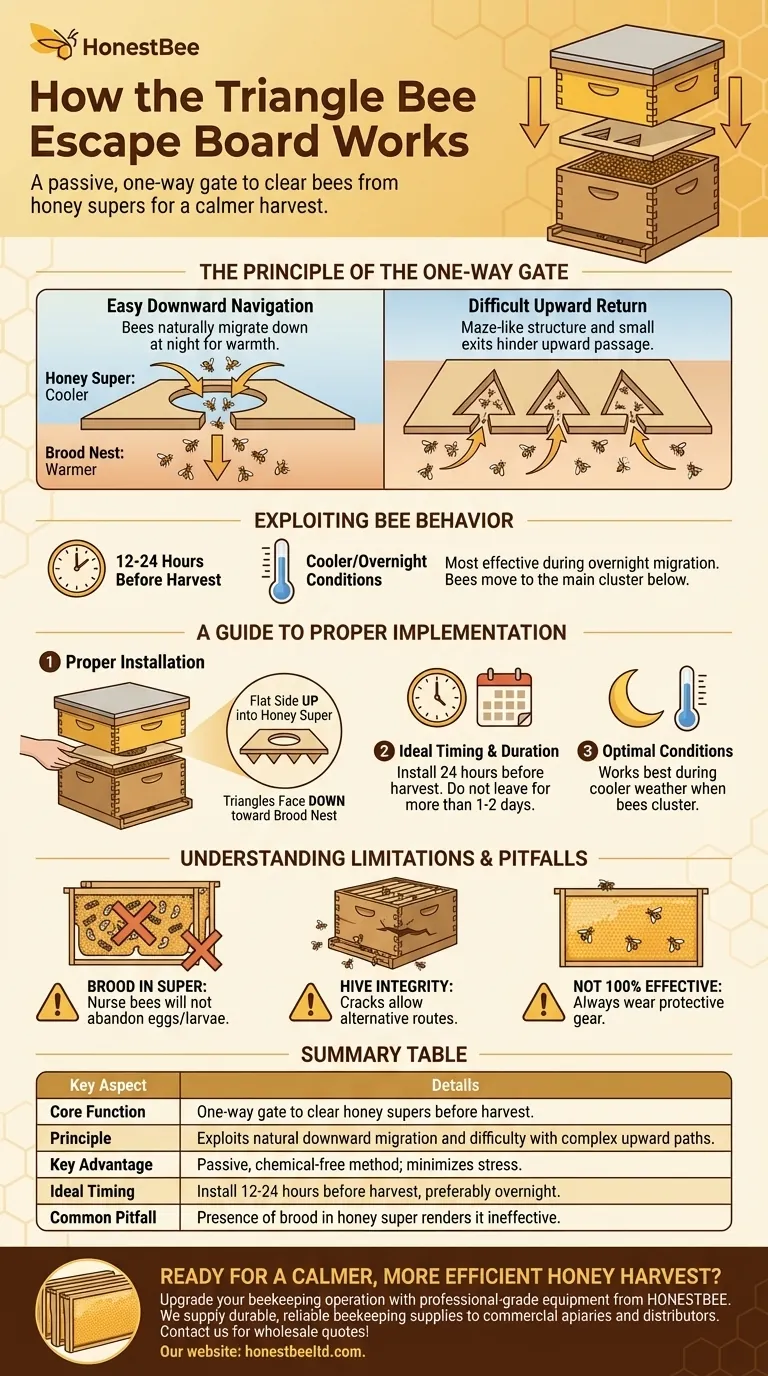
Related Products
- HONESTBEE Wooden Bee Escape Board with Triangle Mesh Design for Beekeeping
- Professional Cone Style Bee Escape for Efficient Honey Harvesting
- Circular Labyrinth Bee Escape for Efficient Hive Management
- HONESTBEE Multi Exit Plastic Bee Escape Board for Efficient Honey Harvesting
- Slatted Porter Style Bee Escape for Rapid Hive Clearing
People Also Ask
- How is the Triangle Bee Escape Board placed when removing a super? Master the Correct Placement for a Stress-Free Harvest
- Where should the triangle escape board be placed in the hive? Master a Gentle, Stress-Free Honey Harvest
- What precautions should be taken when using the triangle bee escape board? Ensure a Gentle & Successful Honey Harvest
- What types of bee escape boards are available? Clear Your Supers Fast and Stress-Free
- What are the available frame sizes for Triangular Escape Boards? Find the Perfect Fit for Your Hive


